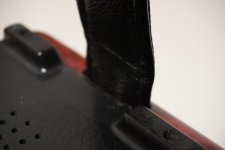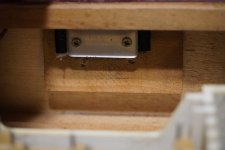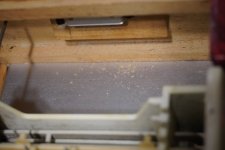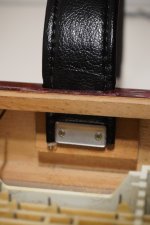Siegmund
Well-known member
Last night I had a really awful practice session. Had poor control of the volume, was pinching my leg with the bellows, was hitting wrong LH notes (more of them than usual.) Had my girlfriend look at my face and confirm that, no, I didn't look like I'd had a stroke, and I could still type with both hands.
Today when I got the nerve to pick up the instrument and try again --- I discovered the problem was the strap for the left hand was way too loose. I cranked it in 'all the way' with the adjustment dial, and it was still too loose... weird. Turns out the other, non-adjustable end of it had "adjusted" itself a good 2cm outward.

Opening up the case, I discovered that this end of the strap is supposed to be held down by two screws, and both of them had popped out of their holes, scattering some grains of sawdust:


Fortunately, the wood was in good shape, other than having a few tiny pinpricks from screws (it looked like this might be the 3rd or 4th time these screws had been re-driven), and the screws bit into the wood nicely and it feels secure again.

So I wiped the sawdust out of the case, sealed it back up, and went on to have a nice practice session tonight.
I wonder how long I have before it recurs. If it does happen again, should I do anything else to try to make the screw connection more secure?
Today when I got the nerve to pick up the instrument and try again --- I discovered the problem was the strap for the left hand was way too loose. I cranked it in 'all the way' with the adjustment dial, and it was still too loose... weird. Turns out the other, non-adjustable end of it had "adjusted" itself a good 2cm outward.

Opening up the case, I discovered that this end of the strap is supposed to be held down by two screws, and both of them had popped out of their holes, scattering some grains of sawdust:


Fortunately, the wood was in good shape, other than having a few tiny pinpricks from screws (it looked like this might be the 3rd or 4th time these screws had been re-driven), and the screws bit into the wood nicely and it feels secure again.

So I wiped the sawdust out of the case, sealed it back up, and went on to have a nice practice session tonight.
I wonder how long I have before it recurs. If it does happen again, should I do anything else to try to make the screw connection more secure?
